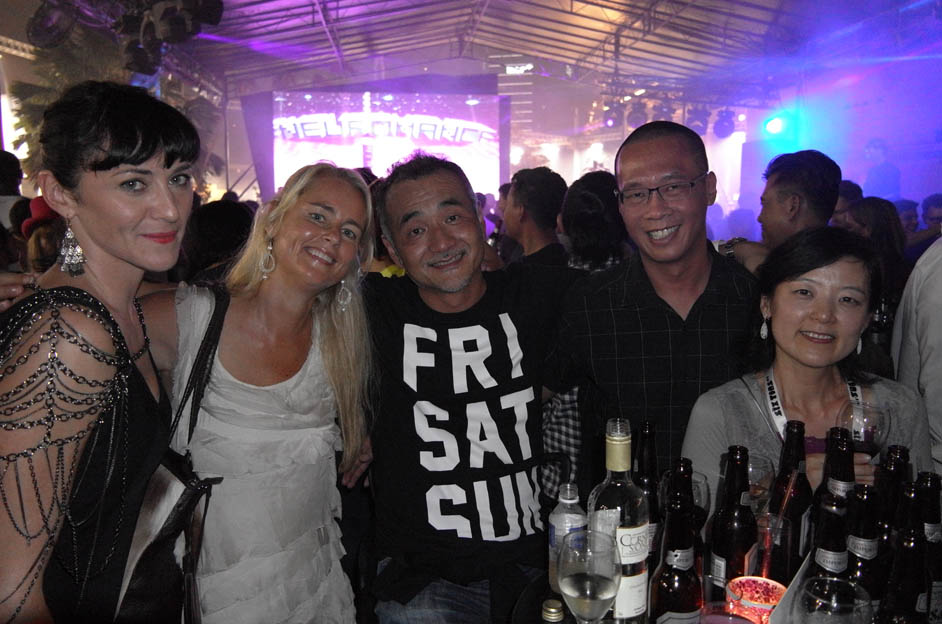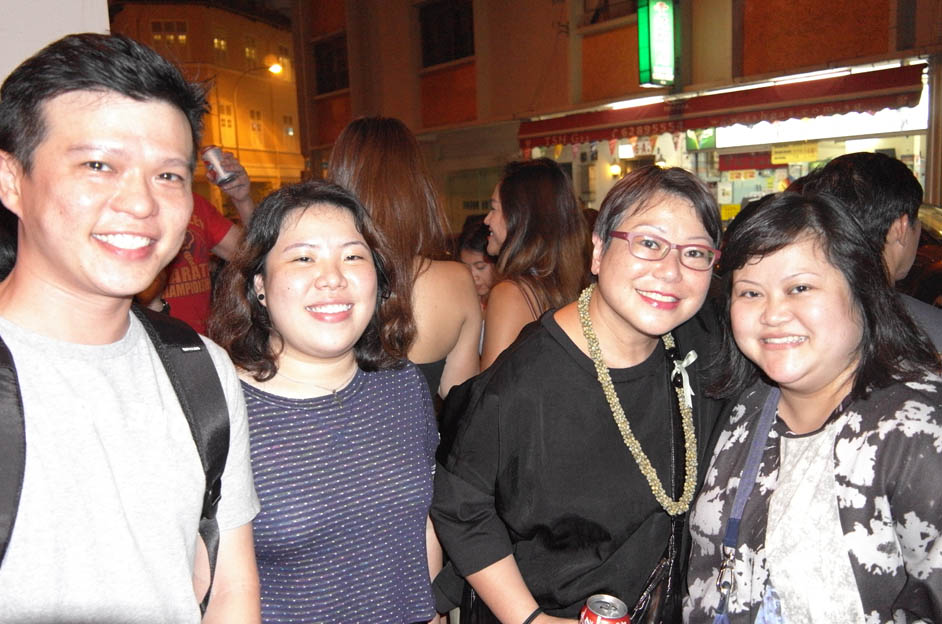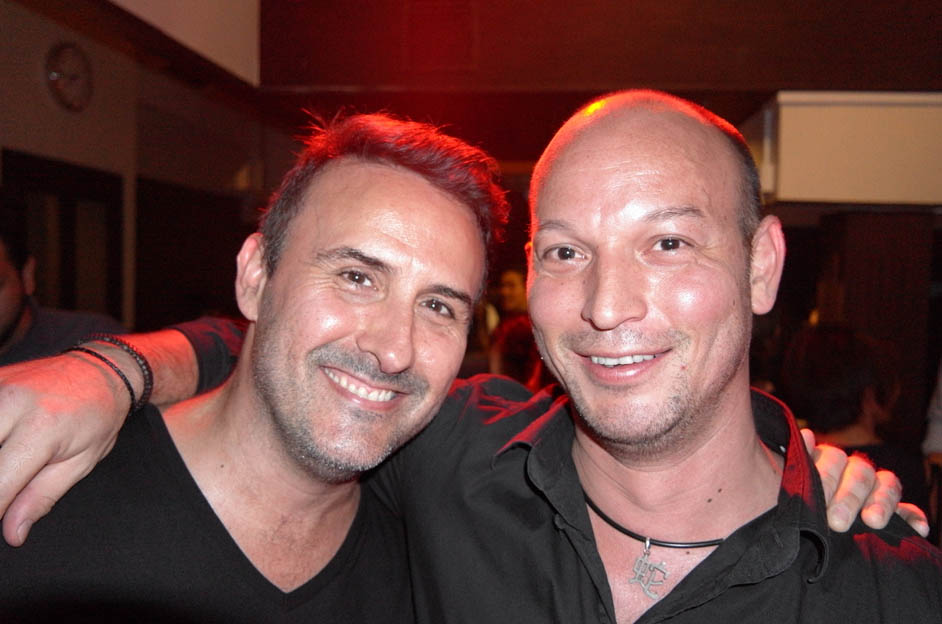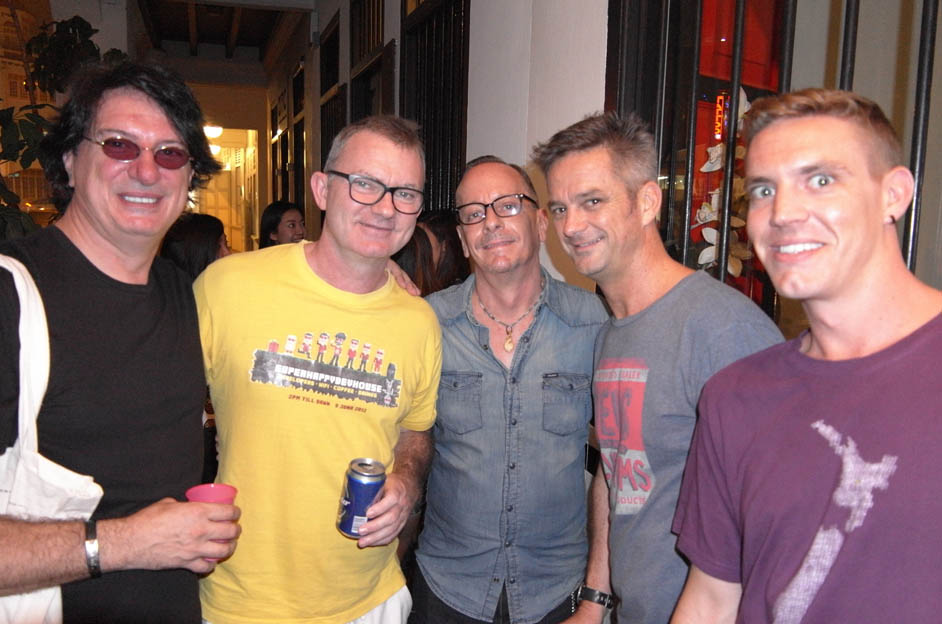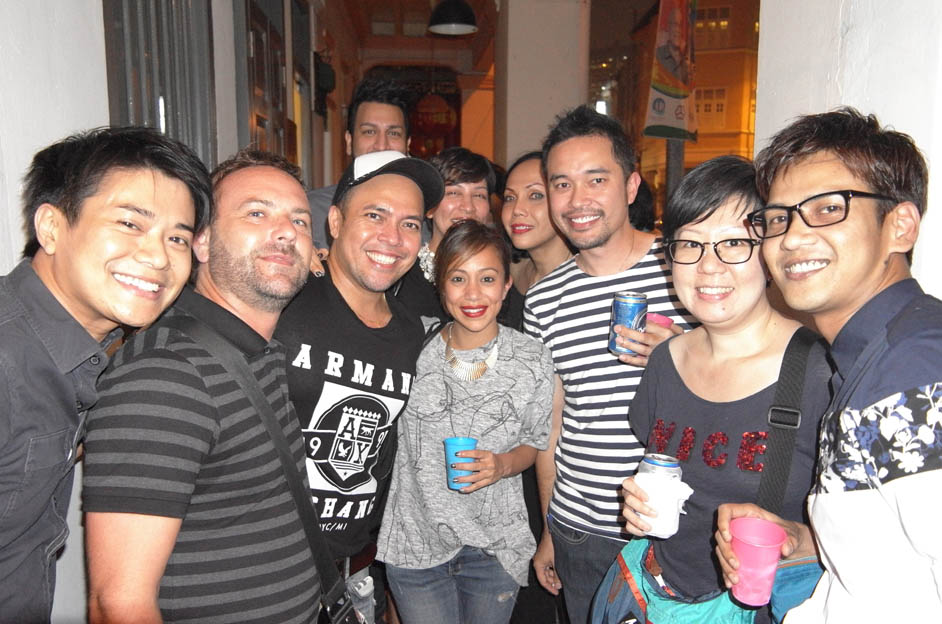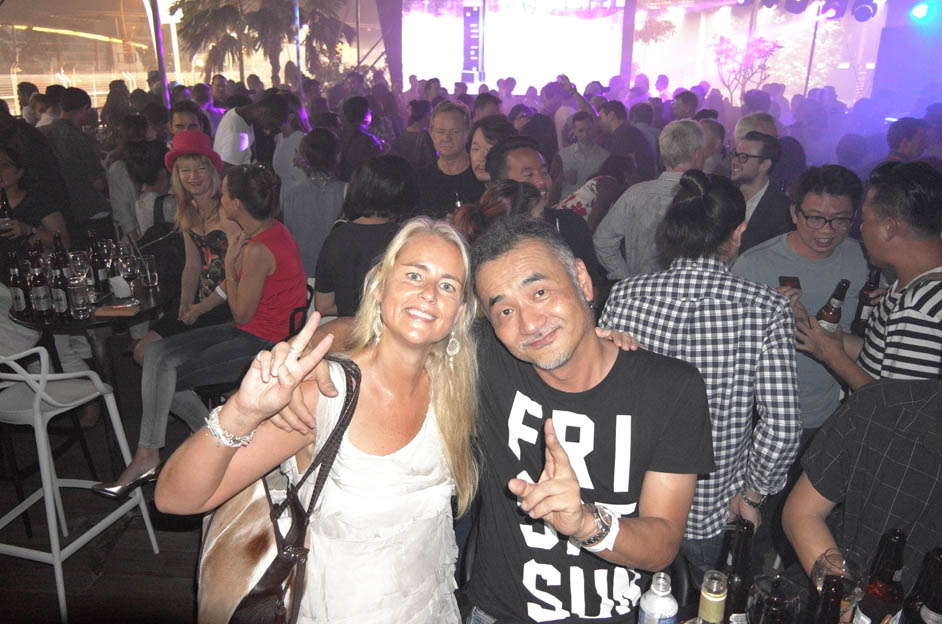Claire Davidson reports on day 2 of Spikes Asia
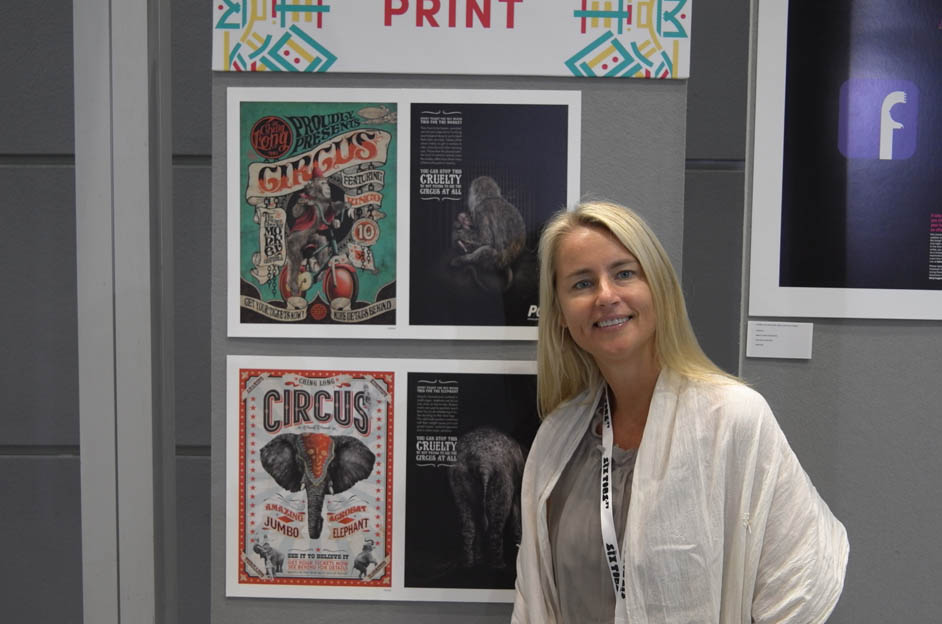
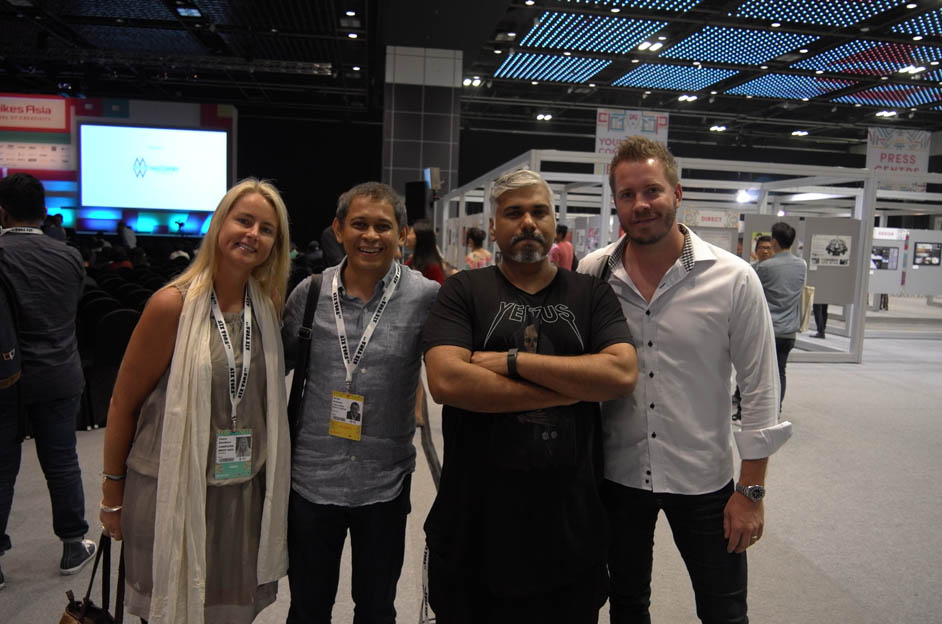 The Sweet Shop’s Claire Davidson (pictured left) is on the ground at The Spikes Asia Festival, at Suntec City in Singapore. Here’s Claire’s highlights of the second day of seminars at the festival.
The Sweet Shop’s Claire Davidson (pictured left) is on the ground at The Spikes Asia Festival, at Suntec City in Singapore. Here’s Claire’s highlights of the second day of seminars at the festival.
Today’s extra extra extra special guest here at Spikes Asia was Christina Hendricks. Swoon… Joan Holloway right in front of me. If only Don Draper were here too. Ultra swoon, drool drool. Gordon Bowen, Founder & Global Chairman & Chief Creative Officer of McGarry Bowen brought us ‘Icons in Action: Intimate Conversations with Creative Innovators’. Icons in Action, launched at the Cannes Lions in 2012, is an in depth look at the intricacies, motivations, passions and inspiration behind some of today’s most powerful creative forces.
Hendricks grew up with a passion for community theatre. Whilst in high school she worked in a hair salon and continued theatre at night, not really thinking that she had a career in performance. Fast forward a little and she moved to LA and modeled. It was here, whilst watching drama, that she decided ‘I can do that’. And that became her motto and motivation. She began.
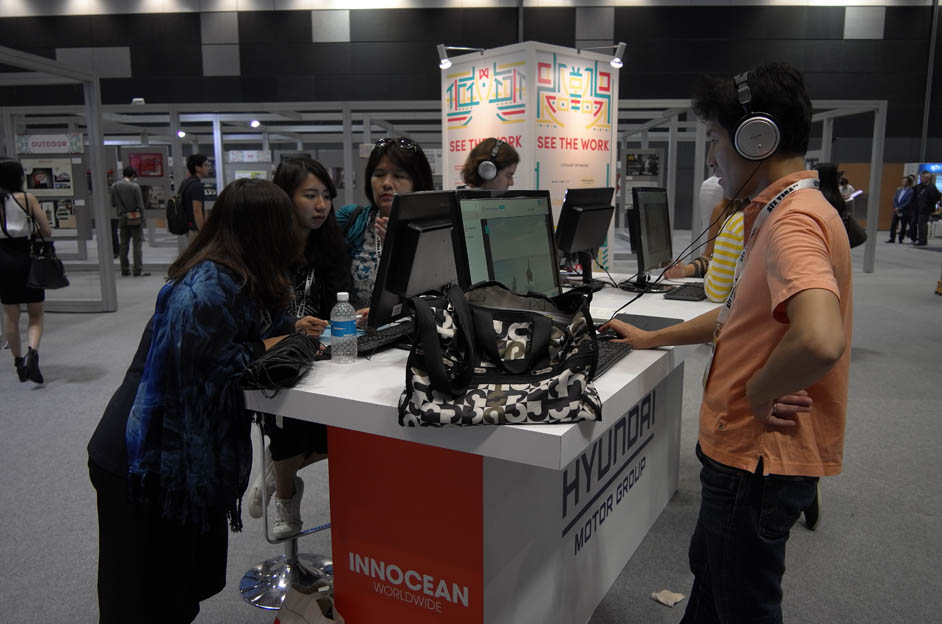
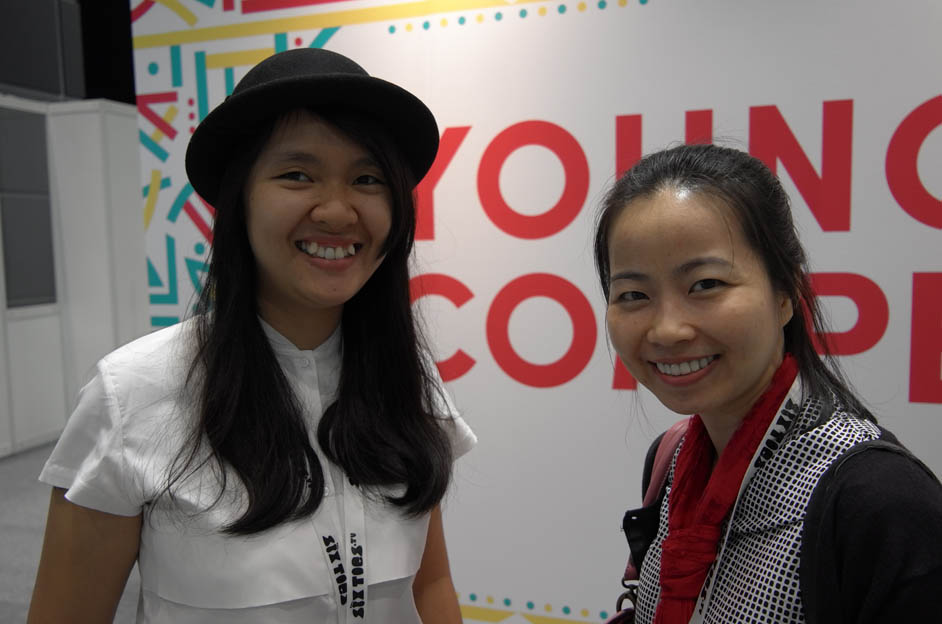 Hendricks took a leap of faith in taking the role of Joan Holloway in Mad Men. She had been a guest star and star in a number of TV series prior. Each one was touted to be ‘the next big thing’. For some reason, sometimes this just doesn’t happen, and it hadn’t happened for Hendricks. When Hendricks read Mad Men, everyone was talking about the script; but it was to be on a network no one believed was going to have a success, particularly with a period piece. The other option on Hendricks’ desk was with a major network – it was a sure deal. But she had thought the other ones were sure deals too, and they didn’t work. So she decided to do the one she was passionate about – Mad Men. Hendricks went with her gut.
Hendricks took a leap of faith in taking the role of Joan Holloway in Mad Men. She had been a guest star and star in a number of TV series prior. Each one was touted to be ‘the next big thing’. For some reason, sometimes this just doesn’t happen, and it hadn’t happened for Hendricks. When Hendricks read Mad Men, everyone was talking about the script; but it was to be on a network no one believed was going to have a success, particularly with a period piece. The other option on Hendricks’ desk was with a major network – it was a sure deal. But she had thought the other ones were sure deals too, and they didn’t work. So she decided to do the one she was passionate about – Mad Men. Hendricks went with her gut.
On Mad Men, the characters were so unique. One character never sounded like another. None of the actors’ lines could be interchanged. Everything was so well thought out. The script was so meticulous and intelligent. Hendricks likes to bring creativity and interpretation to her scripts, but also knows that collaboratively the goal is to steer the script to an end result with the audience, and that comes through direction. Hendricks too likes to make her characters as real as possible. Details on set are important, to help you feel the space and become your character.
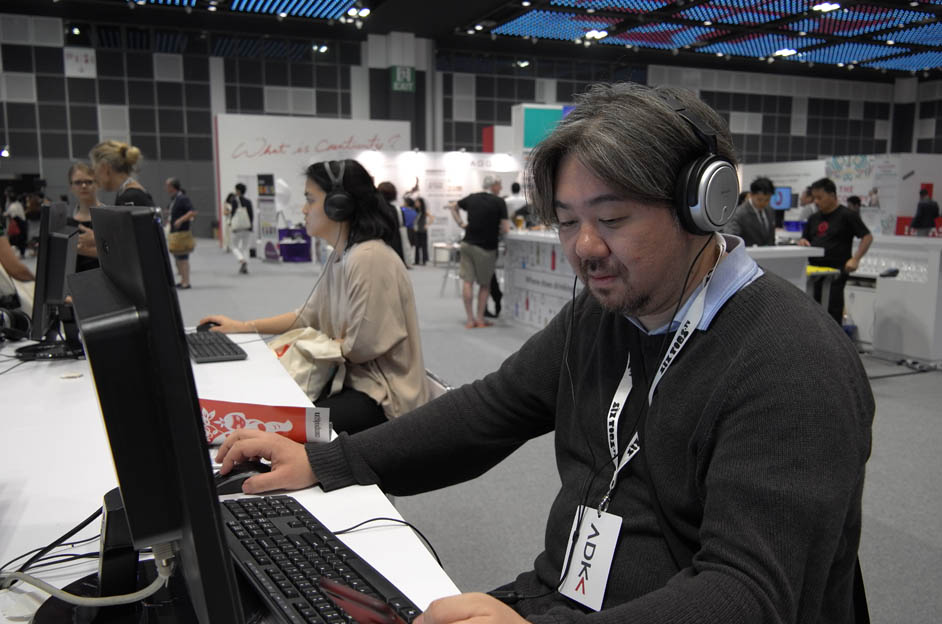
 The character of Joan is strong, resilient, confident and multi-faceted. People root for Joan. She’s able and accomplished, and people would get upset when things were taken from her. The audience were cheerleaders for Joan. Like Joan, this has fueled Hendrick’s entire career. If you don’t love it, then don’t do it. Trust your instincts and your heart. Know what you can contribute. Know your strengths, and go full force. Like both Joan and Hendricks, we today are also cheerleaders for successful women in advertising, the creative arts, and other industries. We celebrate these women.
The character of Joan is strong, resilient, confident and multi-faceted. People root for Joan. She’s able and accomplished, and people would get upset when things were taken from her. The audience were cheerleaders for Joan. Like Joan, this has fueled Hendrick’s entire career. If you don’t love it, then don’t do it. Trust your instincts and your heart. Know what you can contribute. Know your strengths, and go full force. Like both Joan and Hendricks, we today are also cheerleaders for successful women in advertising, the creative arts, and other industries. We celebrate these women.
Hendricks told us to find our voice. If you know something to be true, then fight for it. Be prepared. You don’t want to let your team down. Be informed. Discuss your ideas. Be supportive of your team and of one another. And most of all be natural. Be authentic. You want your audience to feel. You want them to relate and be touched. Know the goal that you want for yourself. Be prepared. And then you can play.
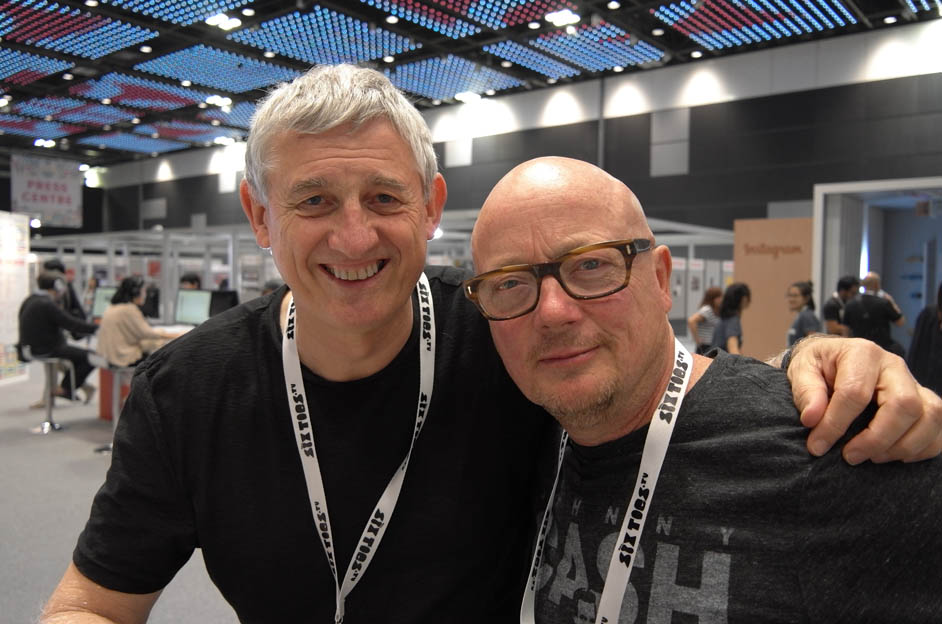
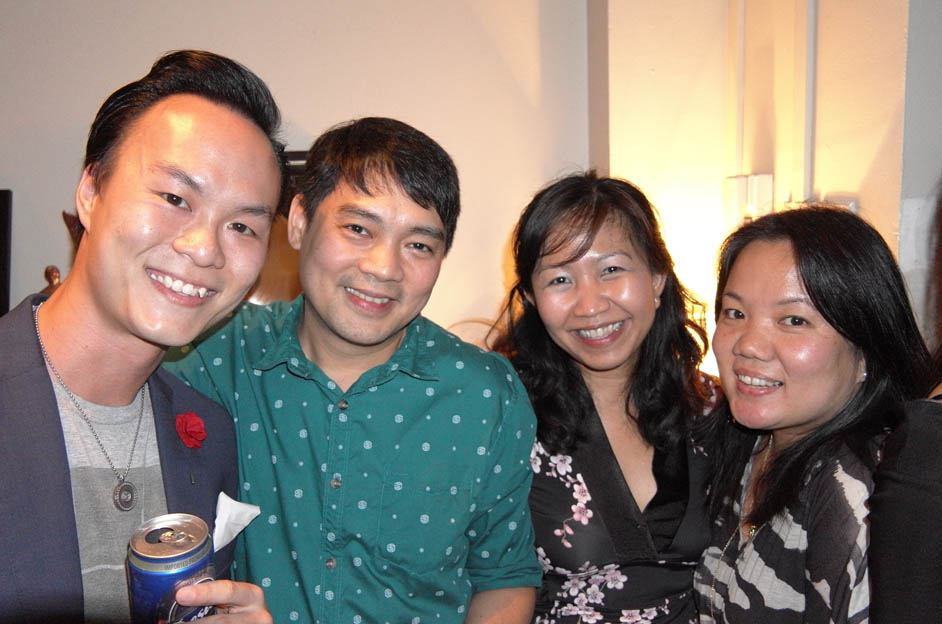 Hendricks looks at an icon as something of a strong image and immediately how it makes her feel. She feels that the character of Joan became such a successful icon because there were all sorts of things – successes and obstacles – that happened to Joan during the eight series of Mad Men, and through that there were consistencies of strength, resilience and pride.
Hendricks looks at an icon as something of a strong image and immediately how it makes her feel. She feels that the character of Joan became such a successful icon because there were all sorts of things – successes and obstacles – that happened to Joan during the eight series of Mad Men, and through that there were consistencies of strength, resilience and pride.
If it feels scarier not to do it, then that is a wonderful reason to push for it. Listen to the creative voice inside of you. Trust your instincts with everything. Be unique. Be individual. Then you will be rewarded. Go for the unknown. Discipline will bring freedom. Collaborate – 1 + 1 can equal 3.
Go #GirlPower.
Next up for me was ‘2 Kids in A Garage’. Moderated by Kristian Barnes, CEO Asia Pacific of Vizeum and together with Carolo Calion and Ron Baetiong, we learnt what is possible out there in today’s world. What idea do you have that could be a game changer, and could become a household name? Do you have that perfect idea for the ‘next big thing’?
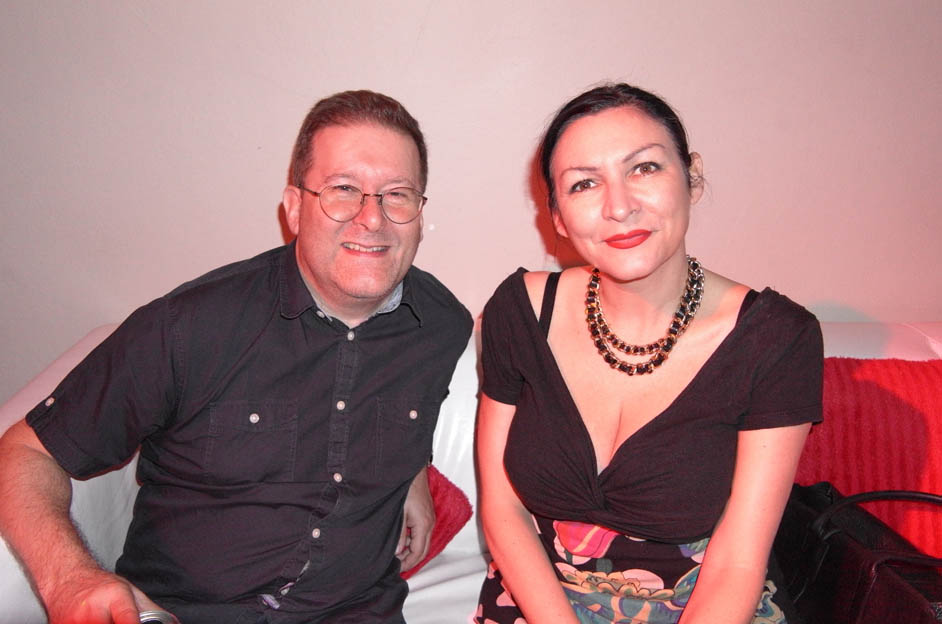
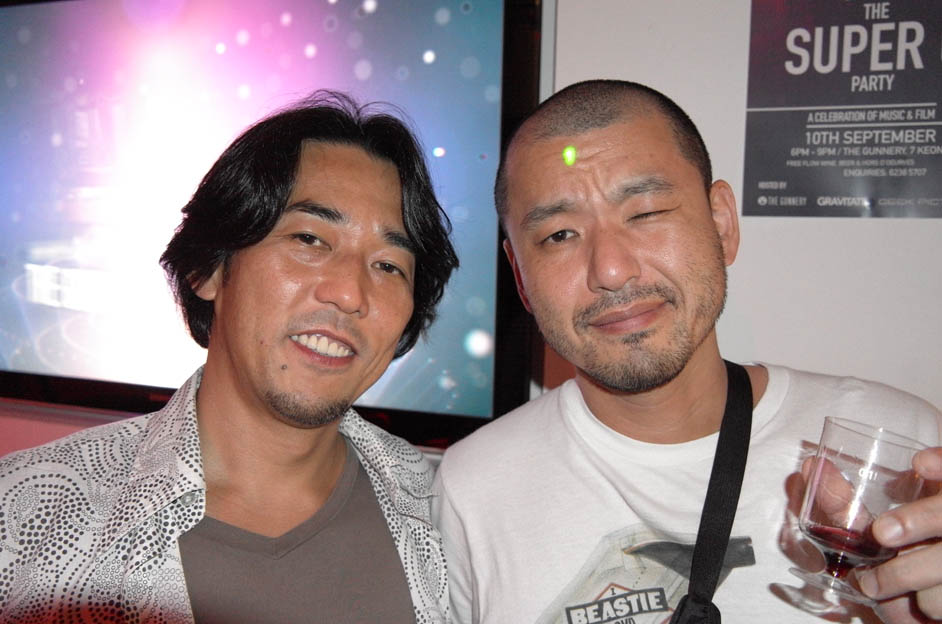 Everyday, everywhere in the world people are investing their smart ideas into new technology. Technology is changing behavior with consumers, and at the forefront of this is our younger entrepreneurial generation. Many young people today would rather create their own businesses. Rather than accept something as ‘this way’, these Millennials are asking ‘why not this way?’ People are seeing opportunities that we didn’t think possible or weren’t aware of, and it’s changing our behavior in ways not yet known to us.
Everyday, everywhere in the world people are investing their smart ideas into new technology. Technology is changing behavior with consumers, and at the forefront of this is our younger entrepreneurial generation. Many young people today would rather create their own businesses. Rather than accept something as ‘this way’, these Millennials are asking ‘why not this way?’ People are seeing opportunities that we didn’t think possible or weren’t aware of, and it’s changing our behavior in ways not yet known to us.
Assisting this, enter Vizeum, who created Spark. The process here is that they take a client’s business problems, on take them to start ups, and see if they can solve a problem in a different way. The start ups get a wonderful opportunity to immediately work with larger brands.
When researching what sector to look at and where exactly to look, Vizeum decided to focus on mobile. In 2018 there will be 970 million smart devices in our hands. Every day 1 trillion photos are taken on our phones. Thirty seven percent of people are now purchasing through mobile. Mobile search has taken over desktop search.
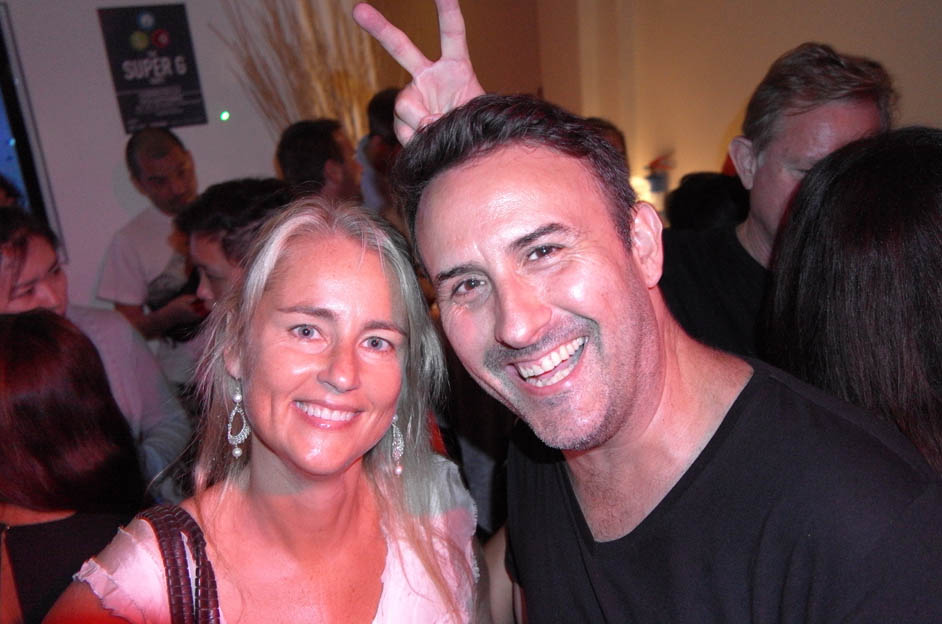
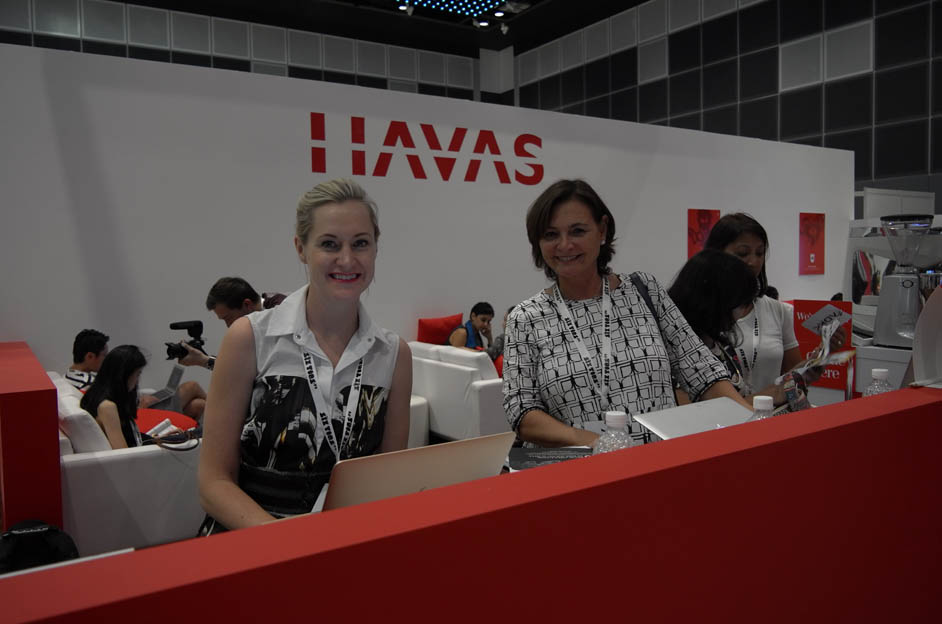 The Philippines is one of the most important locations for the start up industry. It’s the second fastest growing economy in Asia. Today we heard from two people who made their ideas real and equitable businesses.
The Philippines is one of the most important locations for the start up industry. It’s the second fastest growing economy in Asia. Today we heard from two people who made their ideas real and equitable businesses.
Ron Baetiong created Partyphile, which is an app to get you into the best events and hot spots in the city. Baetiong started the concept six years ago as his college thesis. The idea came to him when he attended a seminar. Ooh… maybe I’ll have my game changer idea attending a seminar too here at Spikes Asia… Every time Baetiong went out he would see queues outside clubs, with the door bitch and people begging or pissed off waiting to get into a venue. This happens in every nightlife event. Baetiong joined Groupon to learn. He also joined pitching competitions. He put in all the savings. Twice he shut the site down, learning each time from his mistakes. He was broke, and had what he thought was an ugly product. But he still had confidence. His inspiration was restored when he someone wearing a t-shirt shouti
ng ‘never give up’. And so he didn’t. He re-launched the website in 2013. He was funded by Kickstart. Within 5 months he had 6000 members. This attracted funding from 500 Startups. Partyphile allows you access to the best events, hassle free. Nightlife will never die, it will just evolve.
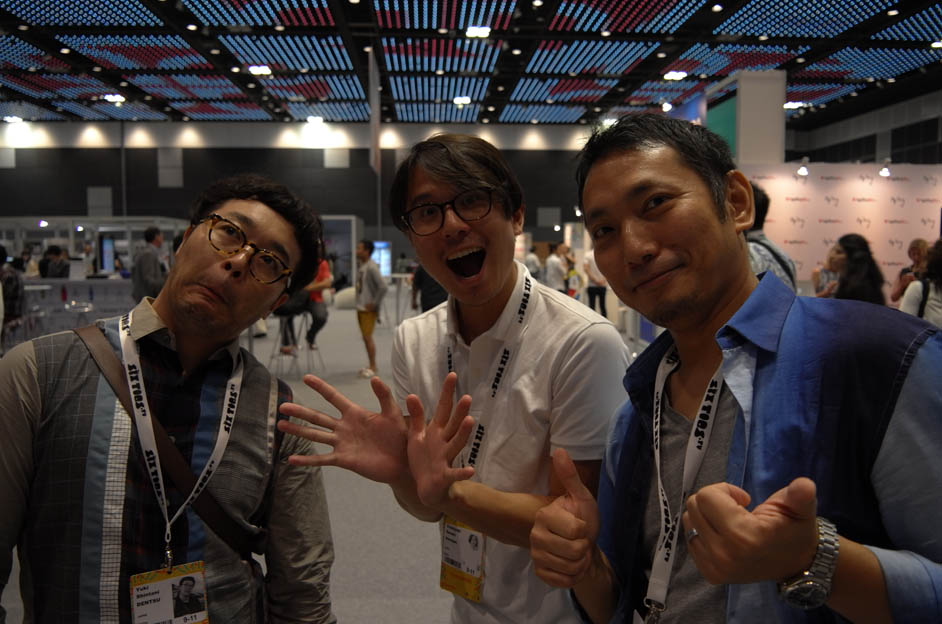
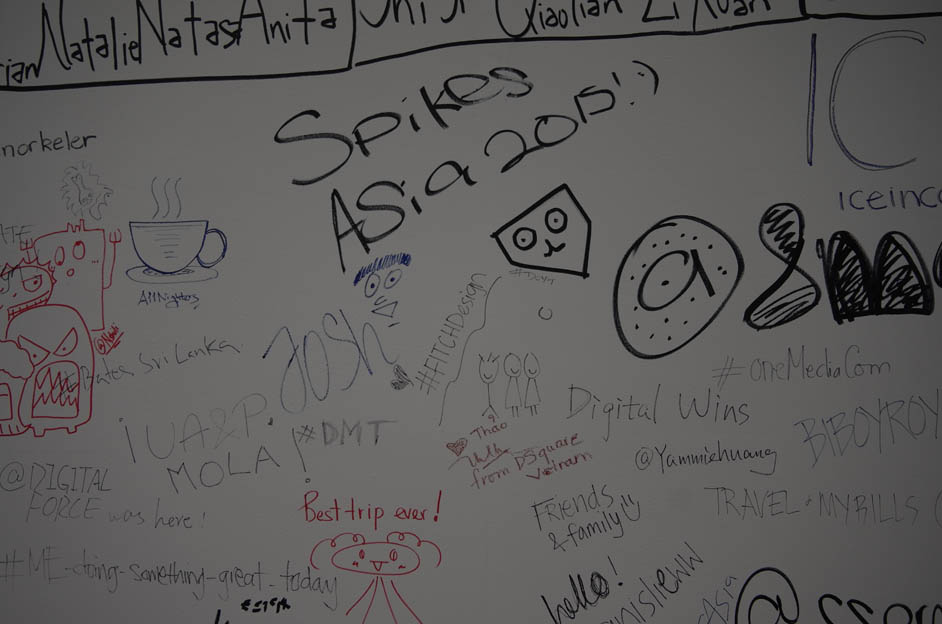 Carlos Caliman is a serial entrepreneur. Of course, some of his companies didn’t succeed, but that’s just part of the start up and business game. Like Baetiong though, this hasn’t allowed him to give up. It’s instead fuelled him even more. He knows that the one who sees the opportunity first will be the one who will succeed. Henry Ford said ‘if I had asked people what they wanted, they would have said faster horses’. There is opportunity in crisis. Customers are constantly looking for ways to save money for the more important things in life. Caliman then created Mobkard. Mobkard gives you more for less. It allows you to save money everyday. It connects brands to consumers via their mobile phones by offering them privileges and location based promotions. You can also receive real-time and relevant flash sales. Caliman told us to innovate and to take the plunge.
Carlos Caliman is a serial entrepreneur. Of course, some of his companies didn’t succeed, but that’s just part of the start up and business game. Like Baetiong though, this hasn’t allowed him to give up. It’s instead fuelled him even more. He knows that the one who sees the opportunity first will be the one who will succeed. Henry Ford said ‘if I had asked people what they wanted, they would have said faster horses’. There is opportunity in crisis. Customers are constantly looking for ways to save money for the more important things in life. Caliman then created Mobkard. Mobkard gives you more for less. It allows you to save money everyday. It connects brands to consumers via their mobile phones by offering them privileges and location based promotions. You can also receive real-time and relevant flash sales. Caliman told us to innovate and to take the plunge.
Yasuharu Sasaki, Executive Creative Director of Dentsu Inc. brought us ‘Creativity In the Pre-Singularity Age’. We all know that advertising creativity is fusing with digital technology to drive us forward. Take Dentsu’s phenomenal Sound of Honda / Ayrton Senna 1989 campaign. This used data and technology in a new an innovative way. It recreated excitement. Content today can be automatically produced in real time, using behavioral data to generate the most effective messages. Our creativity is evolving by this technology and data. It is thought that by 2045 AI will surpass the human brain. Will our creativity become unneeded? Will we lose of our jobs? Hang on, will I be retired by then? It is also thought that if we reach technological singularity, the most efficient communication will automatically be created by AI.
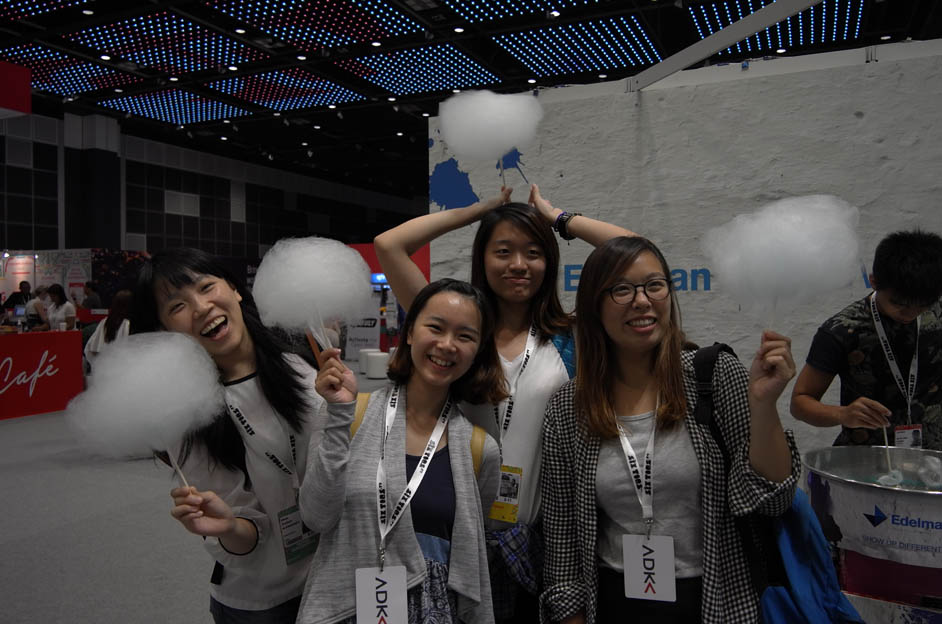
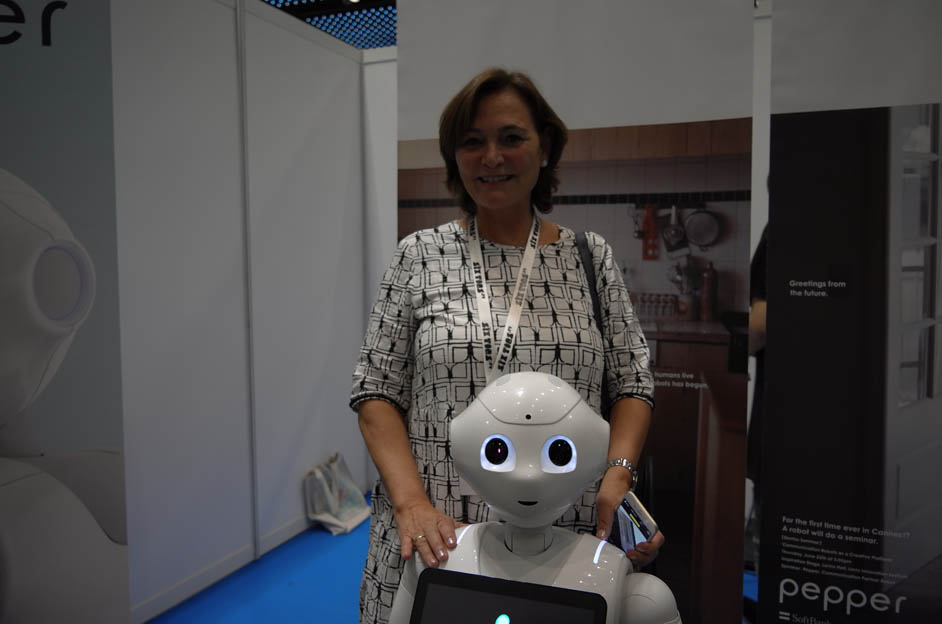 AI has already entered fields where human creativity is needed most. We looked at case studies for Chef Watson, Deep Dream, Music X-ray and Fencing Visualized – Yuki Ota.
AI has already entered fields where human creativity is needed most. We looked at case studies for Chef Watson, Deep Dream, Music X-ray and Fencing Visualized – Yuki Ota.
Taking the role of creativity in technological advancement one step further, Dentsu has been involved in the development of several humanoid robots. Most recently, Dentsu has created a mass-produced robot called Pepper for home use. We can buy our own Pepper for USD $1,600. He’s even here with us at Spikes Asia this year. We shook hands earlier. Pepper is a communication partner with emotions who becomes a member of the family. He doesn’t do housework, but rather responds to our emotions. His purpose is to ‘make people happy’ and enhance our lives. He creates a strong emotional bond with people. Pepper is a combination of technology, science and human creativity and it was Dentsu’s creative team who created Pepper’s personality. Our ‘unpredictable’ creativity is still important. Personal robots will change our lives again, just as personal computers have.
We next looked at my favourite humanoid, Matsuko-Roid, whom I met at Cannes earlier this year. We had a hug back in June. Matsuko-Roid is the world’s first TV android entertainment programme hosted by an android personality. Matsuko-Roid has internal models consisting of desires, intentions and behaviours. Celebrities are always expensive, busy and demanding. Making an android solved this problem for Dentsu, and in so doing also kept the values of the celebrity. They had to create the celebrity’s presence. Matsuko-Roid is changing TV. The android became the content. Dentsu has provided TV stations with a new form of content. The celebrity and android collaborate and work as partners as well. The result raised the celebrity’s popularity. Dentsu has stepped outside its comfort zone, and invaded other areas, working closely with scientists and artists in other fields. They are creating new business.
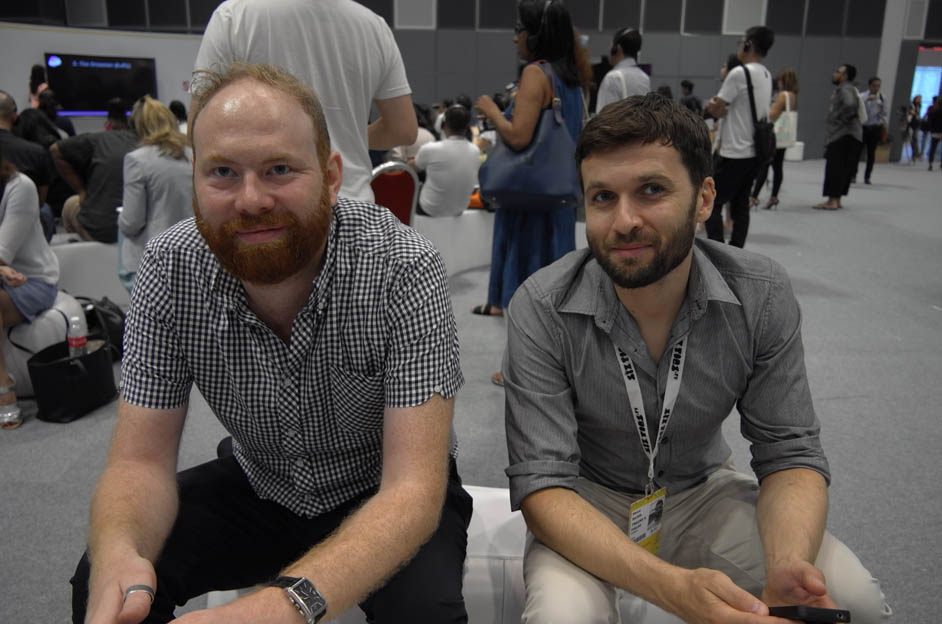
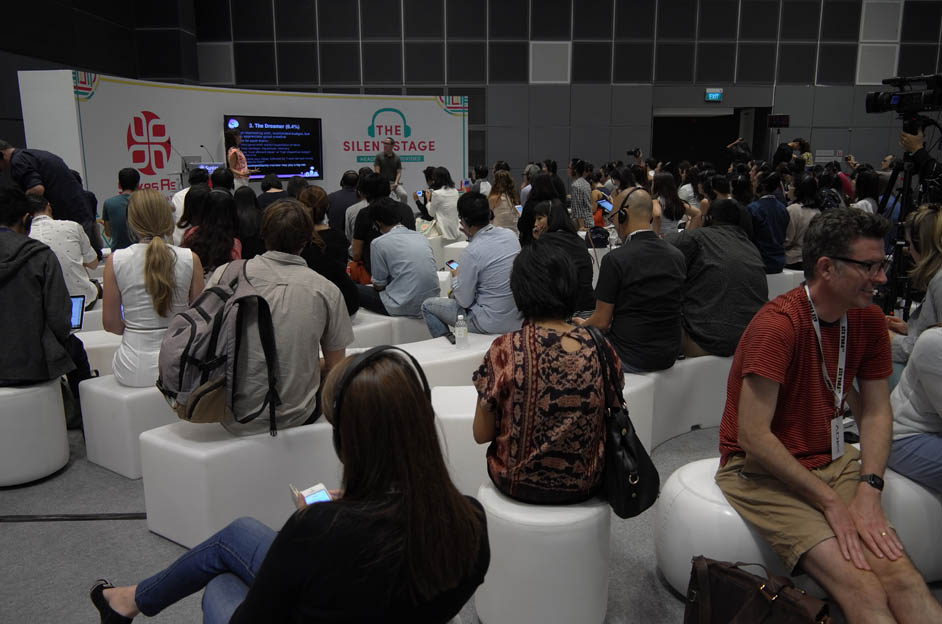 The more technology develops, the more the importance of creativity will increase. However, mediocre ideas may not be able to beat AI. What we need is a strong creativity that can manipulate AI. Only human creativity can create new innovations. The Singularity is not the end of creativity. Rather, it indicates a greater need for our creativity. There was a collective gasp of relief from all of the creatives in the room to hear this, and to know that their futures were safe… at least for the time being. Stronger creativity will bring us a better future.
The more technology develops, the more the importance of creativity will increase. However, mediocre ideas may not be able to beat AI. What we need is a strong creativity that can manipulate AI. Only human creativity can create new innovations. The Singularity is not the end of creativity. Rather, it indicates a greater need for our creativity. There was a collective gasp of relief from all of the creatives in the room to hear this, and to know that their futures were safe… at least for the time being. Stronger creativity will bring us a better future.
‘Google: There Is No Clutter’ was brought to us by Mike Glaser, Senior Marketing Manager, Creative Partnerships of Google. Google has conceptualized Art Copy & Code and the merging of these three different conventions. They look to these to build things never seen before and bring them together. What is Google’s role when it comes to advertising in the next five years? Google prefers to focus on what they can do within the next three to six months. Marketing was born out of a world of scarcity. But today we live in an abundant world – with abundant media and abundant choice. Today’s abundant world gives us the opportunity of infinite choice. We have an abundance of screens and content. But we’ve also developed our own cognitive tools that filter out what doesn’t matter and filter in what does matter to us and also adds value to our daily life. Today we have choice plus immersion. This is a world that wants more, not less, but more of what we want to engage in.

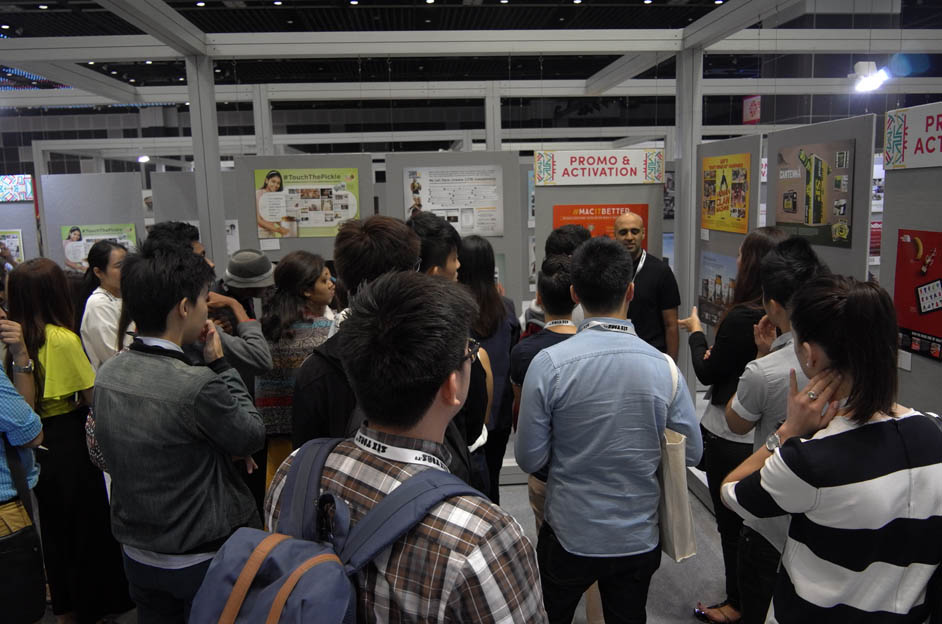 So how do we best approach brand building today where consumer choice meets immersion? Based on the Art, Copy & Code initiative, Google has paired brands and agencies to re-imagine marketing for today. They followed a three step process:
So how do we best approach brand building today where consumer choice meets immersion? Based on the Art, Copy & Code initiative, Google has paired brands and agencies to re-imagine marketing for today. They followed a three step process:
~ learn behavior
~ find your moment
~ be simple, but deep
This process has come to life with Google on three projects tha
t we looked at today – Madden NFL, the Hunger Games and Target.
This world of abundance is the best opportunity for us as marketers. It raises the bar for what we get to do. It gives us the challenge to have our content chosen. We’ve never been better equipped to tackle this. Don’t fall back on old ideas. Amazing is always on the other side of saying yes.
Last up for me today was ‘Celebrating Diversification – Putting Gender At The Top Of The Agenda’. There are still so many things to talk about now, regarding women in the industry and gender in the industry. Eighty percent of buyers are women, yet only three percent of women are Creative Directors. On the panel today were Merlee Jayme, Chairman & Chief Creative Officer of DM9 Jayme Syfu, Suzanne Powers, Global Chief Strategy Officer of McCann, Josy Paul, Chairman & Chief Creative Officer of BBDO India, and the discussion was moderated by Lucy Hockings, Presenter of BBC World News.
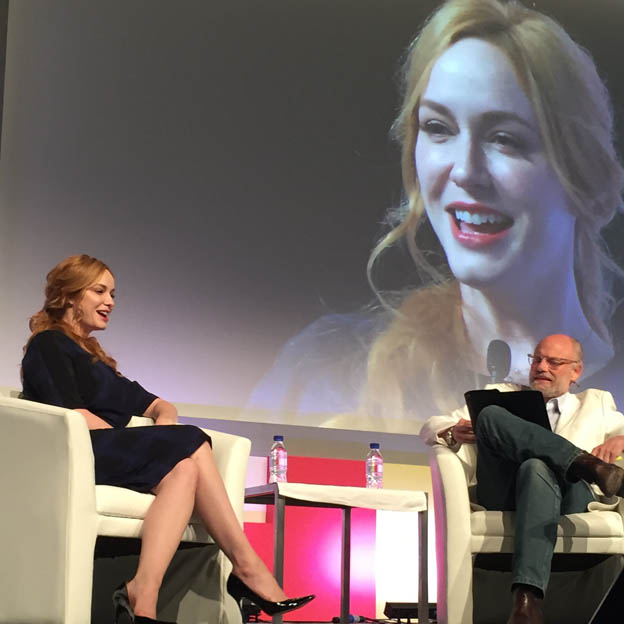
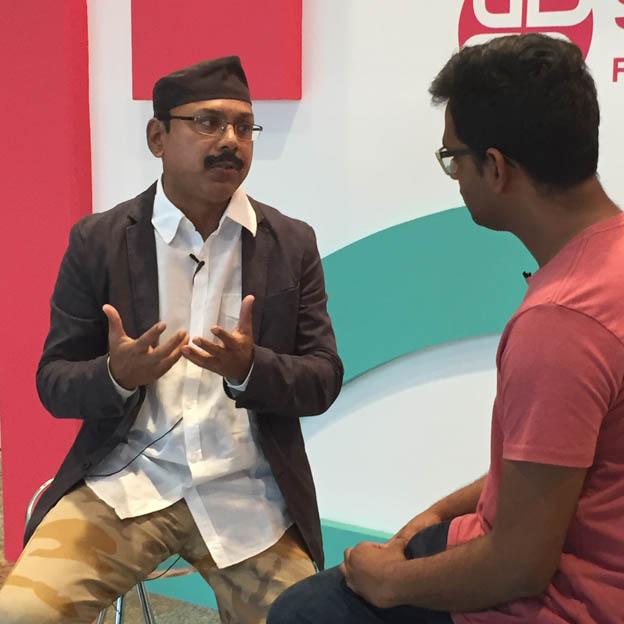 The panel today felt that there aren’t so many barriers within the advertising industry, but it’s often about barriers with individuals within the advertising industry. Of course, sometimes larger factors such as culture, society and religion come into play as well.
The panel today felt that there aren’t so many barriers within the advertising industry, but it’s often about barriers with individuals within the advertising industry. Of course, sometimes larger factors such as culture, society and religion come into play as well.
The creative industry is a long journey and women do struggle to juggle it all with a family and a career. Fears can hold women back. What we do is intense. What we do is time consuming. What we do is stressful. We never stop. We discussed resonating more with contemporary women and their behavior. Agencies, with their HR policies, should look to respond appropriately and be more embracing, to maximize women’s potential. They should assist in bringing about balance, policy wise. There should be education and training for all. There is no reason that women shouldn’t be included. Include us. We need to look at equalizing all of the different roles – be it from a female or male perspective. As an industry, we need to continue to encourage people to go beyond stereotypes and recognise the contributions that each individual, male or female, can make to the workplace.
We know that women really can help to shape the effective messages we put out there, particularly when they are marketing to other women. Women are perceptive about communication. Brands are also starting to change. Stereotypical images of men and women in marketing messages are being also being tackled.
Bring on the role models. Go #GirlPower again today!
I’m off now to drinks with The Gunnery, Gravitate and Geek Pictures, dinner with The Mill, and then the fantasmagorical Dentsu Aegis Network and Massive Music Neuromance Party. What another monstrous night ahead after a monstrous day here at Spikes Asia 2015.
See you all tomorrow…
Claire Davidson, Managing Director + Executive Producer ASIA & MENA @ The SweetShop, reporting for Campaign Brief Asia at Spikes Asia 2015.
